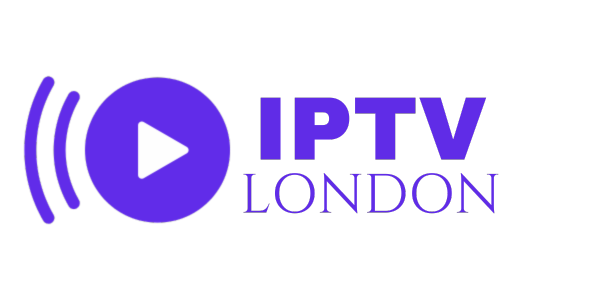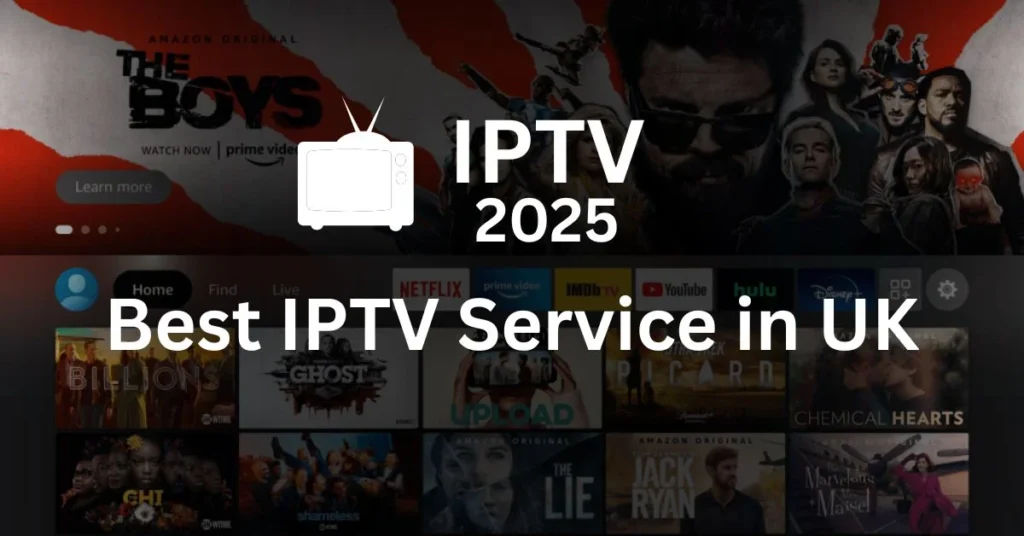The digital landscape of television is evolving rapidly, and IPTV 2025 stands at the forefront of this transformation. As traditional cable slowly fades into the background, Internet Protocol Television (IPTV) is emerging as the smarter, more flexible, and more affordable alternative. This guide dives into the world of IPTV in 2025—how it works, where it’s headed, and how it’s becoming the go-to choice for viewers worldwide.
What is IPTV and How Does It Work?
IPTV, or Internet Protocol Television, delivers TV content over internet networks instead of traditional cable or satellite formats. In 2025, the process will be more seamless and efficient than ever.
Instead of broadcasting via antennas or satellite dishes, IPTV UK uses a broadband connection to stream TV channels, movies, and on-demand content directly to your device—be it a smart TV, smartphone, laptop, or set-top box. This allows users to watch what they want, when they want, without being tied to a schedule.
There are three main types of IPTV services:
- Live Television – streaming live broadcasts.
- Time-Shifted Media – catch-up TV services.
- Video on Demand (VoD) – access to an entire media library.
Thanks to stronger internet infrastructure in 2025, buffering and poor quality are becoming problems of the past.
Evolution of IPTV Over the Years
IPTV didn’t-didn’t didn’t become a household name overnight. Here’s a brief timeline of how far it’s come:
| Year | Milestone |
|---|---|
| 1995 | First experimental IPTV broadcast |
| 2005 | Major telcos began offering IPTV services |
| 2015 | Smart TVs increased IPTV accessibility |
| 2020 | Streaming wars fueled IPTV content innovation |
| 2025 | Integration with AI, 5G, and smart home systems |
From experimental beginnings to full-blown content ecosystems, IPTV’s journey has been driven by innovation and consumer demand.
Major Trends Shaping IPTV in 2025
2025 brings exciting trends that are pushing IPTV beyond just internet-based TV:
- AI-Powered Personalization: Platforms now use advanced AI to recommend shows based on your mood, habits, and even time of day.
- Multi-Device Streaming: Watch on the phone during your commute, then switch to your smart TV at home—without losing your spot.
- Interactive Content: Choose-your-own-adventure storytelling is booming, especially for kids’kids’kids’ shows and mystery genres.
These trends point to a more immersive and tailored viewing experience that traditional TV can’t can’t can’t match.
IPTV vs Traditional TV and Streaming Services
| Feature | IPTV | Traditional TV | Streaming Services |
|---|---|---|---|
| Content Control | On-demand & live | Scheduled only | Mostly on-demand |
| Device Compatibility | High | Limited to TV sets | High |
| User Experience | Personalized | Generic | Personalized |
| Price | Affordable | High | Varies |
IPTV in 2025 combines the best of both worlds—live content and flexibility—while still maintaining cost-effectiveness.
Top IPTV Providers in 2025
Here are some of the top-performing IPTV platforms in 2025:
- Sling TV 2025 Edition
- YouTube TV Enhanced
- Hulu + Live TV
- Tivimate Premium
- IPTV Smarters Pro
Each offers unique packages tailored for sports fans, movie buffs, and families alike.
IPTV Hardware and Software Requirements in 2025
To enjoy the full IPTV experience in 2025, having the right hardware and software is essential. Fortunately, modern IPTV systems are more user-friendly and accessible than ever.
Essential Hardware for IPTV:
- Smart TVs: Most come with IPTV apps pre-installed, such as Smart IPTV or IPTV Smarters.
- Set-Top Boxes: Devices like MAG, Fire TV Stick, and Apple TV remain popular for users wanting dedicated IPTV streaming.
- Routers and Modems: A stable, high-speed internet connection is the backbone of IPTV—preferably with speeds over 25 Mbps.
Top Software Solutions:
- IPTV Player Apps: These include Tivimate, GSE Smart IPTV, and XCIPTV, offering advanced EPG (Electronic Program Guide), video playback, and account linking features.
- Operating Systems: Android TV, iOS, and Windows all support IPTV applications.
- Browser Support: Web-based IPTV portals now allow seamless streaming without needing app installations.
In 2025, plug-and-play is the standard. Users can set up their IPTV in minutes with QR code syncing and auto-configuration features.
5G and IPTV: A Perfect Match
One of the biggest boosts to IPTV in 2025 is 5G technology. It brings game-changing improvements to how IPTV is delivered and experienced.
How 5G Enhances IPTV:
- Ultra-Low Latency: Ideal for live sports and real-time events.
- Higher Bandwidth: Streams high-resolution 4K and 8K video without buffering.
- Mobility: Watch IPTV on the go, even while commuting or traveling, with consistent quality.
IPTV provider now integrate 5G options directly into their apps and services, allowing for mobile-first streaming that doesn’t doesn’t doesn’t sacrifice performance.
The Rise of IPTV in Smart Homes
The modern smart home ecosystem is incomplete without IPTV. Here’s how IPTV has integrated with smart home tech in 2025:
- Voice Commands: Use Alexa, Google Assistant, or Siri to change channels or search for shows.
- Automation: Schedule IPTV to turn on your favorite channel when you arrive home.
- Interconnectivity: Sync IPTV with smart lighting and speakers for immersive cinema experiences.
The result? A highly personalized, automated entertainment environment that adapts to your habits and lifestyle.
Legal Aspects and Regulation of IPTV in 2025
IPTV’s growth hasn’t come without challenges—especially in terms of legality and compliance.
Legal IPTV vs. Illegal IPTV:
- Legal IPTV: Licensed providers operating within national regulations.
- Illegal IPTV: Unlicensed streaming services, often involved in piracy.
Key Regulations in 2025:
- Geo-blocking & Licensing: Many countries have tightened content licensing laws.
- Anti-Piracy Crackdowns: Governments in the EU, North America, and Asia are enforcing stricter penalties.
- User Responsibility: End-users may face consequences for knowingly using pirated IPTV.
Consumers are encouraged to choose verified IPTV providers and check regional laws before subscribing.
IPTV Subscription Plans and Pricing Models
The pricing models for IPTV in 2025 are more flexible and diverse than ever:
| Plan Type | Description |
|---|---|
| Freemium | Basic channels for free with ad support |
| Subscription-Based | Monthly or yearly payments for full channel access |
| Pay-Per-View (PPV) | One-time payment for special events or content bundles |
| Custom Bundles | Tailor your subscription based on content preferences |
With plans starting as low as $5/month, IPTV has become accessible across all income levels.
IPTV for Businesses and Education
IPTV is also transforming how organizations deliver content:
- For Businesses: Use IPTV for internal communications, employee training, and live announcements.
- In Education: Remote learning programs now stream live lectures and interactive sessions via IPTV networks.
By offering scalable, high-quality broadcasts, IPTV enhances productivity and accessibility for institutions.
Security and Privacy Concerns with IPTV
As IPTV becomes mainstream, so do concerns about privacy and data protection.
Common Risks:
- Data Tracking: Some providers track viewing habits for ad targeting.
- Unencrypted Streams: This may expose user data or invite cyberattacks.
- Fake IPTV Apps: Can steal information or install malware.
How to Stay Safe:
- Use VPNs when accessing IPTV.
- Choose services with end-to-end encryption.
- Read privacy policies carefully.
Security has become a key differentiator among IPTV services in 2025.
IPTV Content Categories in 2025
IPTV in 2025 offers something for everyone, thanks to its massive content diversity:
- Live Sports: Including exclusive events, PPV matches, and analysis.
- Movies and TV Shows: From global studios and indie creators.
- Niche Channels: Focused on cooking, travel, education, gaming, and more.
- Cultural & Regional Content: Localized programming in native languages.
Content discovery is also enhanced with AI-curated playlists and recommendations.
User Experience and Interface Innovations
Modern IPTV apps in 2025 are all about ease of use and aesthetic design:
- Voice Navigation: Speak to find shows or switch categories.
- Minimalist Interfaces: Less clutter, more content.
- Accessibility Features: Audio descriptions, subtitles, and high-contrast modes.
Providers are investing heavily in UX/UI to retain customers and reduce churn.
Challenges Facing the IPTV Industry
Despite its success, IPTV still faces hurdles:
- Bandwidth Demands: High-definition streams can strain networks.
- Regional Licensing Issues: Content availability still varies across countries.
- Piracy: Illegal services continue to erode trust and revenue.
- Competition: From global OTT giants like Netflix, Disney+, and Prime Video.
Overcoming these requires innovation, investment, and regulatory support.
Future Predictions for IPTV Beyond 2025
What’sWhat’sWhat’s next for IPTV? Experts predict:
- AR/VR Content: Interactive, 360° channels for immersive viewing.
- AI-Generated Programming: Auto-created shows based on viewer behavior.
- Global IPTV Networks: Unified platforms offering global access with local relevance.
IPTV is expected to evolve beyond entertainment into a critical tool for communication, commerce, and culture.
FAQs About IPTV 2025
1. Is IPTV legal in 2025?
Yes, but only if you use licensed providers. Unofficial streams may violate copyright laws.
2. What’sWhat’sWhat’s the best IPTV provider in 2025?
It depends on your region and content needs. Top options include Hulu Live, YouTube TV, and Tivimate.
3. Can I watch IPTV without a smart TV?
Absolutely. You can use a set-top box, streaming stick, or your smartphone.
4. Is 5G necessary for IPTV?
Not required, but 5G enhances quality and reduces lag, especially for mobile users.
5. Can IPTV replace cable TV completely?
For most users, yes. IPTV offers more content, better control, and cheaper pricing.
6. What kind of internet speed do I need for IPTV?
A minimum of 25 Mbps is recommended for HD, while 50+ Mbps is ideal for 4K content.
Conclusion:
In 2025, IPTV isn’t just a tech trend—it’s a complete redefinition of how we consume media. With more content, smarter features, better affordability, and global reach, IPTV offers a superior experience compared to traditional TV.
Whether you’re you’re you’re a casual viewer, a binge-watcher, or a business looking for smart broadcasting, IPTV in 2025 provides something valuable for everyone.

